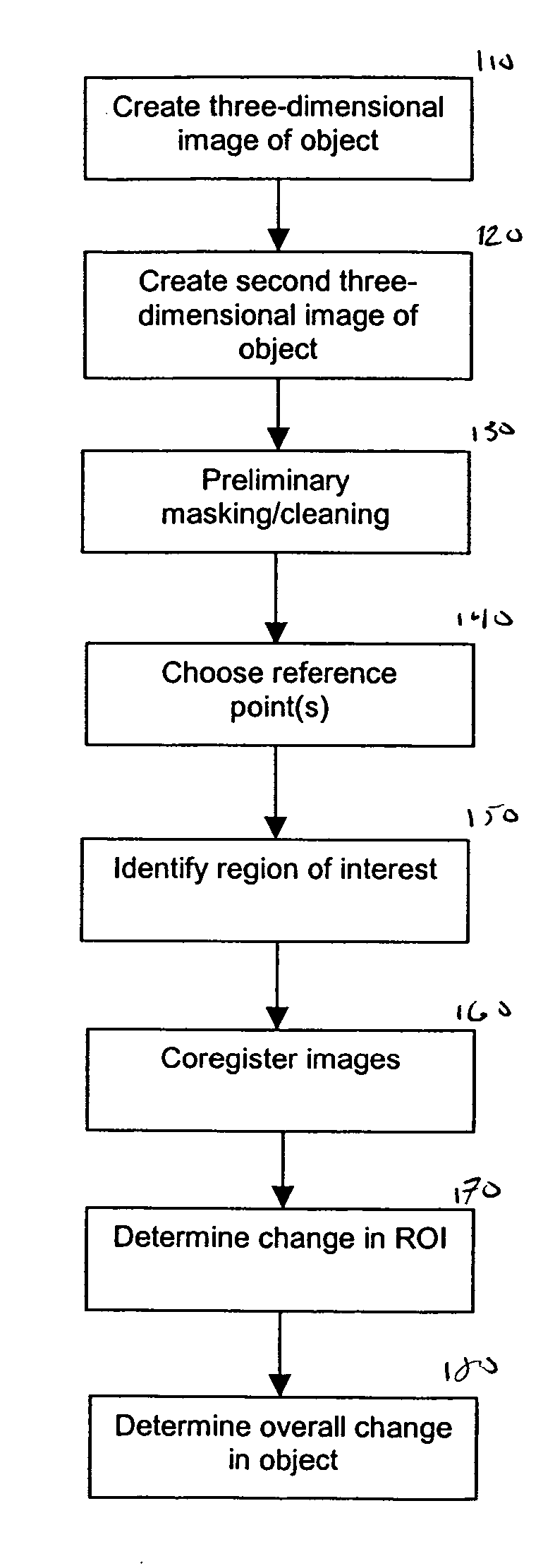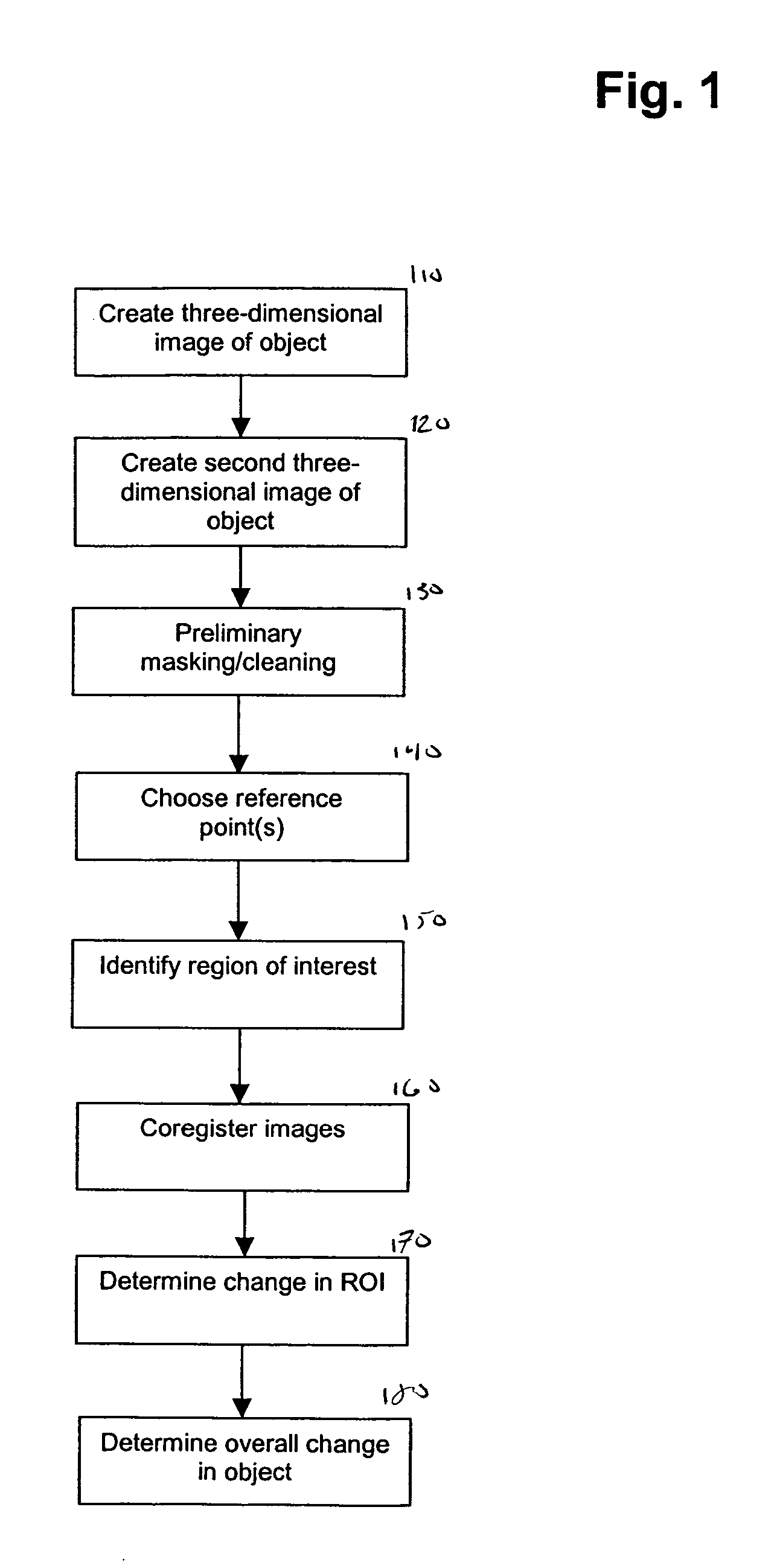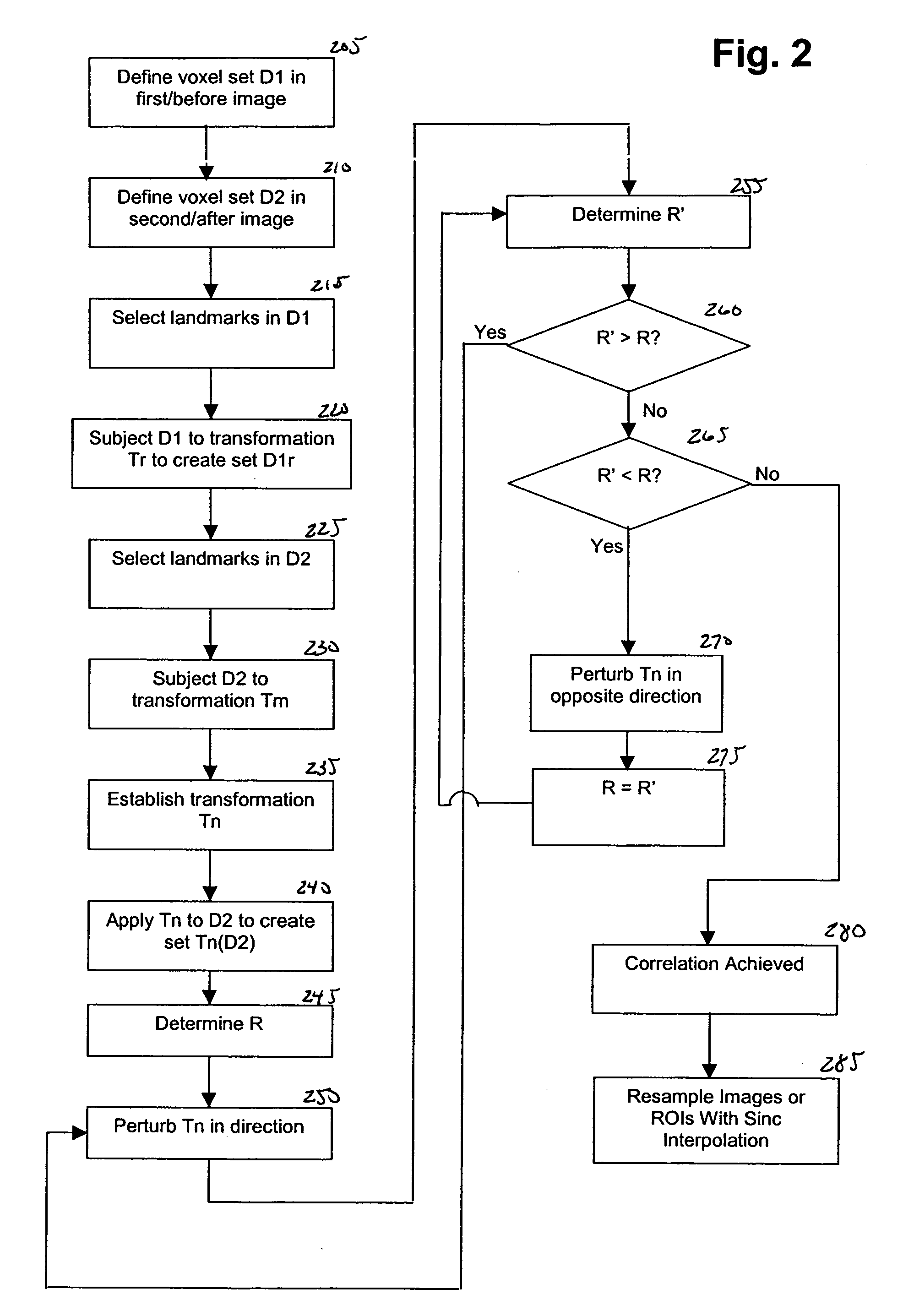Method and apparatus for evaluating regional changes in three-dimensional tomographic images
a tomographic image and regional change technology, applied in the field of methods for identifying changes in three-dimensional images acquired by tomographic instruments, can solve problems such as memory loss, difficult to measure the hippocampus of the brain, and buy precious tim
- Summary
- Abstract
- Description
- Claims
- Application Information
AI Technical Summary
Benefits of technology
Problems solved by technology
Method used
Image
Examples
study 2
[0137] Study 2 demonstrates a positive linear correlation between the rate of atrophy within the MTL and the time since the clinical diagnosis of Alzheimer's disease. Subjects who had been diagnosed with Alzheimer's disease for a longer period showed a greater annual rate of atrophy, with an estimated overall 0.5% per year increase in the rate for each additional year the subject survives with Alzheimer's disease. Analysis indicates that the TSO, and not the age per se, correlates with this annual rise in the atrophy rate. A similar analysis of a control group of cognitively normal elderly confirms a small rate (averaging 0.3% per year) of MTL atrophy.
[0138] While the methods disclosed herein have been described and shown with reference to particular operations performed in a particular order, it will be understood that these operations may be combined, sub-divided, or re-ordered to form equivalent methods without departing from the teachings of the present invention. Accordingly, u...
PUM
 Login to View More
Login to View More Abstract
Description
Claims
Application Information
 Login to View More
Login to View More - R&D
- Intellectual Property
- Life Sciences
- Materials
- Tech Scout
- Unparalleled Data Quality
- Higher Quality Content
- 60% Fewer Hallucinations
Browse by: Latest US Patents, China's latest patents, Technical Efficacy Thesaurus, Application Domain, Technology Topic, Popular Technical Reports.
© 2025 PatSnap. All rights reserved.Legal|Privacy policy|Modern Slavery Act Transparency Statement|Sitemap|About US| Contact US: help@patsnap.com



